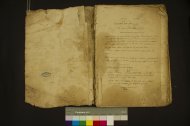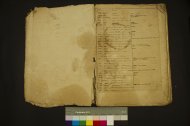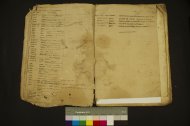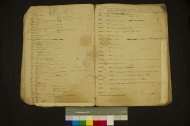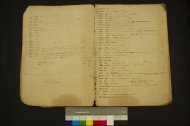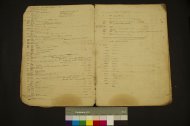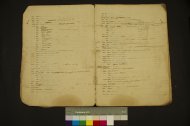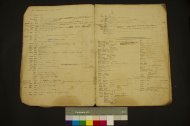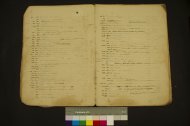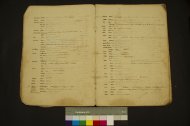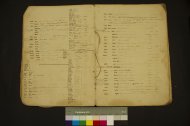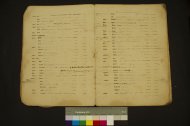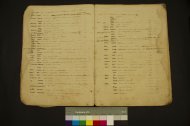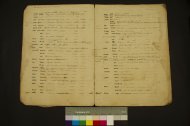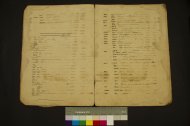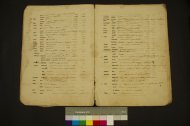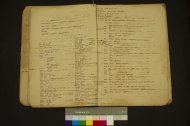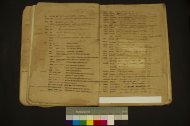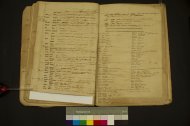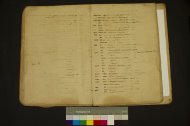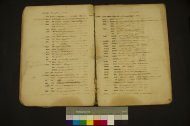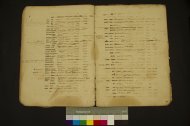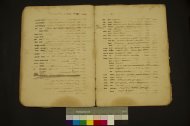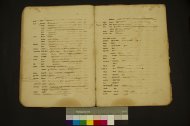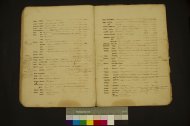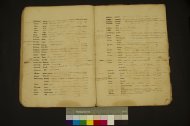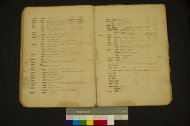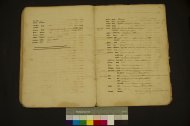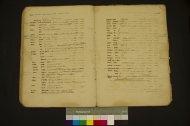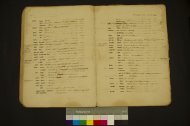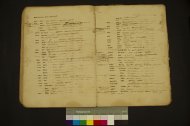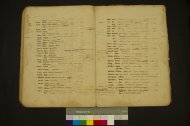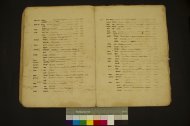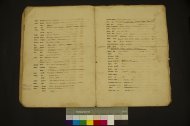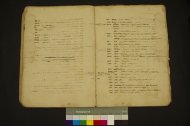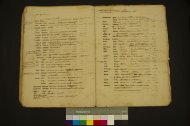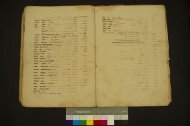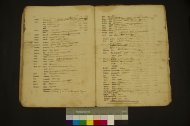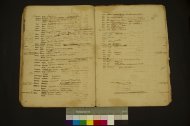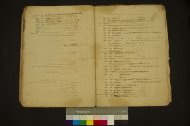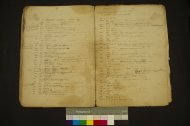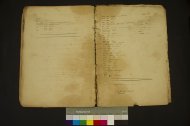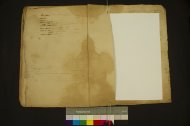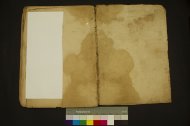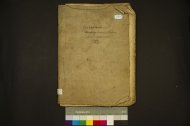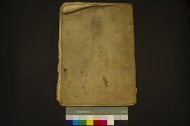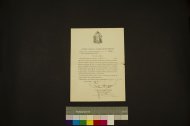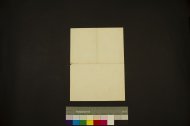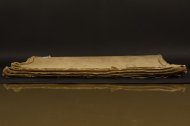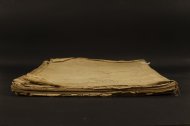|
Shelfmark |
SGI 253 |
|
Owning institution |
Società Geografica Italiana, Rome |
|
Typology |
Notebook |
|
Copying date |
1854 (see the colophon) |
|
Title |
‘Dizionario etiopico-amarico-italiano’ |
|
Subject |
Aethiopica, Lexicon |
|
Language |
Gǝʿǝz, Amharic, Italian. |
|
Short description of the content |
Ff. 1v–54v: Dizionario etiopico-amarico-italiano (“Gǝʿǝz-Amharic-Italian vocabulary”) Incipit, in Italian: ‘Sauasau, ossia Vocabolario delle radici, o nomi della lingua Gheez ግዕዝ o etiopica. Questo dizionario è secondo il metodo degli Etiopi.’ The text is arranged on three columns: the first accommodates Gǝʿǝz entries, the second accommodates the corresponding Amharic word, the third accommodates the Italian meaning. Gǝʿǝz entries are arranged in alphabetical order according to the first consonant of their roots. The alphabetical order is repeated several times over the manuscript; it is often violated, probably because the vocabulary was expanded continuously over time. Additional wordlists related to particular subjects have been inserted in the main hand, e.g. “Nomi degli spiriti celesti” (“Names of the heavenly spirits”, f. 10r), names of the apostles and prophets (f. 14v). |
|
Writing material |
Paper |
|
Outer size (included the binding) |
344 x 248 x 13 mm |
|
Outer size of the textblock |
344 x 246 x 10 mm |
|
Number of folia |
56 |
|
Blank folia |
1v, 2v, 28v, 55r–56r. |
|
Binding |
Two burlap sheets. |
|
Sewing |
Two S-twisted threads of vegetal origin. |
|
Sewing pattern |
– |
|
Quires |
5 |
|
Quire marks |
– |
|
Layout |
1 column (ff. 3r–v, 5r, 14v and some sections on ff. 12r, 19r, 25v, 28r are written on two columns) |
|
Number of lines per column |
ca. 20–70 |
|
Ruling |
Blind ruling. Some folia are also ruled in pencil. |
|
Ruling pattern |
– |
|
Scribe |
Padre Giovanni Stella. |
|
Colophon |
F. 1v: 1854. |
|
Additional notes |
1). F. 2r: The name አቡነ፡ ዮሐንስ፨, i.e. abunä Yoḥannǝs, is indicated in the upper margin of the leaf. The name is written in red ink an Ethiopian hand. 2) F. 54r: በስመ[፡ ]አብ፡ ወወልድ፡ በስመ[፡ ]አብ፡. Invocation written in black ink in an uncertain hand, perhaps by an aged scribe. |
|
State of preservation of the binding |
Mediocre. |
|
State of preservation of the textblock |
Poor. |
|
Provenance and history |
The manuscript was written by Padre Giovanni Stella (1822–1869) in 1854. The vocabulary was expanded by P. Stella over the following years. The manuscript came into possession of the Società Geografica Italiana at some time between 1869, when P. Stella died, and 1930, when the existence of this material was first reported in Giuseppe Gabrieli’s Manoscritti e carte orientali nelle biblioteche e negli archivi d'Italia: dati statistici e bibliografici delle collezioni, loro storia e catalogazione, 1930. The manuscript is also mentioned in Silvio Zanutto’s Bibliografia etiopica (1932). |
The item also includes a loose paper sheet containing on the recto the text of a letter, written in Latin and sent to Padre Giovanni Stella. The text is printed, except for the addressee, the dating, and the signature. The text is as follows: “Superior Generalis Congregationis Missionis, Dilecto nostro in Christo Confratri D° Giovanni Stella, dictæ Congregationis Sacerdoti, Salutem in Domino.
Cùm negotia aliqua nunc exigant ut ad Italiam et loca adjacentia te conferas, nos de tuâ pietate, sufficientiâ et experientia jamdudùm nobis satis cognitis confidentes, tibi libenter licentiam concessimus ac per præsentes concedimus ad dicta loca pergendi, ibique quandiù opus erit commemorandi. Quapropter illustrissimos Antistites, Decanos, Parochos, cæterosque Ecclesiarum Rectores locorum per quæ transieris suppliciter ac enixè rogamus, ut tibi facultatem faciant Missam celebrandi, cùm te ab omni ecclesiasticâ censurâ immunem, imò laudabili vitâ bonisque moribus præditum esse constet: quod jure merito omnibus quorum interest testamur.
In quorum fidem præsentes Litteras nostrâ ac Secretarii nostri manu subscriptas, sigilloque nostro munitas expedivimus.
Datum Parisiis, anno Domini millesimo octingentesimo sexagesimo quinto die verò mensis, Septembris 4°.
De Mandato Reverendi admodùm D.D. Superioris generalis.”
The letter is dated 4 September 1865, Paris. The verso of the paper is blank.


